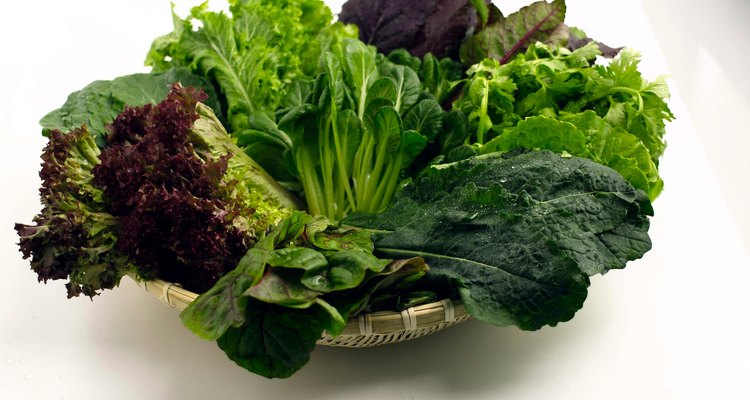
Jupiterimages/Photos.com/Getty Images
It's impossible to sum up Cajun cuisine in a word or idea, but if you could, free-spirited, easy-going, passionate, diverse and explosive would make good candidates. Cajun cuisine has a heavy, natural French influence, and you find a lot of classic French techniques in Cajun cuisine, from the dark roux used to flavor and thicken gumbo, to the holy trinity of yellow onion, celery and bell pepper, a Cajun take on the French aromatic trio known as mirepoix. One of the most beautiful aspects of Cajun cooking is its freedom. Whether you're cooking maque choux or mustard greens, your palate is your guide when it comes to seasoning.
Rinse the mustard greens under cool running water while rubbing your fingers in the curly parts of the leaves to dislodge any dirt.
Trim off any thick stems and roughly chop the greens. Place the greens in a pot.
Cover the greens with 1 or 2 inches of water and place them on the stove over high heat. Salt the water and taste it. You want the water about as salty as you want the greens to taste. Bring the water to a boil.
Boil the greens until wilted, about five minutes. Transfer the greens from the pot to a food-storage container of ice water using a strainer or a slotted spoon to halt the cooking process.
Remove the mustard greens after they cool down and drain them in a colander. Press on the greens with the back of a spoon or a rubber spatula to squeeze as much water as possible from them. Reserve the greens in the colander while you render the pork fat and cook the aromatics.
Render about 1/4 pound of cubed salt pork or 1/4 pound of bacon for every 2 pounds of mustard greens in a heavy-bottomed pan or pot on the stove over low heat. Don't rush the rendering; simply let the low heat coax the fat from the pork.
Add the holy trinity to the rendered pork fat and raise the heat to medium. The Cajun holy trinity, a version of mirepoix consisting of two parts roughly chopped yellow onion to one part each green bell pepper and celery, serves as the flavor and aroma backbone of Cajun cooking.
Add minced garlic to the holy trinity. Garlic commonly accompanies a holy trinity, and garlic and Cajun cuisine are nearly inseparable.
Add peppers or a spicy ingredient to the holy trinity, if desired. Cajun cuisine commonly uses hot peppers or a hot pepper derivative, such as red pepper flakes or diced fresh hot peppers, to contribute heat to most dishes. However, mustard greens provide their own heat, and you might want to let it stand on its own.
Stir the holy trinity occasionally with a wooden spoon until it browns. Add a tablespoon or two of tomato paste to the pan. When tomato paste is added to mirepoix or holy trinity, it's called a pincage. The pincage adds acidity and deep, rich color to Cajun dishes, as well as depth of flavor.
Pour white wine in the dish when the pincage cooks to au sec, or nearly dry, to deglaze. Scrape the pan vigorously with a wooden spoon to dislodge the fond, or caramelized bits, sticking to the bottom of the pan. Let the wine reduce by half and add the mustard greens to the pan. Set the heat to low.
Stir the greens well to mix the trinity and other ingredients with them. Add spices to the greens. Cajun cooking uses a host of spices almost always added to taste. Common Cajun herbs and spices include gumbo file, onion powder, smoked paprika, garlic powder, black pepper, white pepper, bay leaf, dried thyme and cayenne pepper, to name a few.
Mix the greens well season to taste with kosher salt. Cover the pot with the lid slightly ajar and cook the greens about 15 minutes, stirring occasionally to meld the flavors together. Serve the mustard greens when ready.
Related Articles

How to Cook Mixed Greens
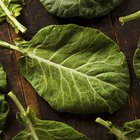
The Healthiest and Best Way to Cook ...

How to Braise a Cross Rib Steak
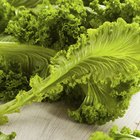
How to Cook Mustard & Turnip Greens in ...
How to Cook Brussels Sprout Greens

How to Cook Sauerkraut and Kielbasa ...

How to Make Collard Greens With Smoked ...
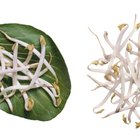
How to cook bean sprouts
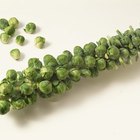
How to Cook Brussel Sprout Greens
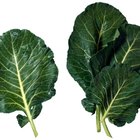
How to Cook Collard Greens in a Crock ...

How to Cook Red Aztec Spinach
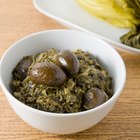
How to Cook 1 lb. of Collard Greens in ...

How to Blanch Collard Greens

How to Make Hibachi Mustard

How to Cook With Pork Jowl
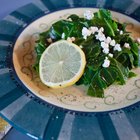
How to Cook Chard

Cooking Kale Greens

How to Cook Collard Greens Without Meat
How Do I Cook Cabbage on the Stove Top?

How to Cook Hu Tieu Noodles
References
Writer Bio
A.J. Andrews' work has appeared in Food and Wine, Fricote and "BBC Good Food." He lives in Europe where he bakes with wild yeast, milks goats for cheese and prepares for the Court of Master Sommeliers level II exam. Andrews received formal training at Le Cordon Bleu.
Photo Credits
Jupiterimages/Photos.com/Getty Images